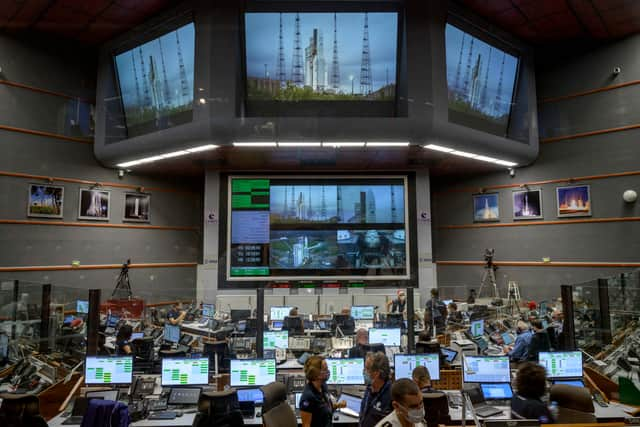James Webb Space Telescope: 5 pictures to mark one year of the deep space telescope
and live on Freeview channel 276
The James Webb Space Telescope turned one on 12 July 2023, and in the first year of its life has produced an array of stunning and existential crisis-inducing pictures to really put in scale how big the universe is.
Although initially launched on Christmas Day in 2021, it took six months for engineers to set up the observatory and test all its systems. It was on 12 July 2022 when the first colour images were shown.
Advertisement
Hide AdAdvertisement
Hide AdThe key goal of the James Webb Space Telescope (JWST) was to trace the very first stars that shined in the early universe, over 13.5 billion years ago. However, the JWST has already proven how powerful it is.


What is the James Webb Space Telescope?
Designed to stare into the deepest depths of space, the telescope is as tall as a three-storey building and as long as a tennis court.
The JWST sees the universe via infrared radiation, which helps it see through the dust of the universe. It sees the universe via mirrors to collect and focus light from distant stars. However, due to its size, the engineers created the Webb of 18 smaller mirrors that fit together like a puzzle.
So what has the James Webb Space Telescope discovered? Here are five top discoveries the Webb telescope has revealed in its first year.
Rho Ophiuchi
Advertisement
Hide AdAdvertisement
Hide AdTo mark the one-year anniversary of the telescope's launch, NASA released a new image of the Rho Ophiuchi cloud complex.
Located around 400 light years away, Rho Ophiuchi is the closest star-forming region to Earth. This complex is not as active compared to the other well-known star-forming regions, but the telescope allows us to see the structure of jets bursting from young solar-mass stars.
You can see a video of the Rho Ophiuchi cloud complex on the NASA website.
The four gas giants
Last month, on 25 June 2023, the JWST revealed the final picture of our solar system's four gas giants in spectacular detail.
Saturn
Advertisement
Hide AdAdvertisement
Hide AdSaturn was shown to have almost an illuminated ring, in a dull brown. The observations dimmed the light off of the planet but allowed the moons to shine more brightly.
The disk also revealed new information about seasonal changes. The image shows the northern hemisphere is reaching the end of its seven-year summer, but the polar region is dark.
Jupiter
The JWST revealed immense detail of the planet's clouds and storms but also a smaller surprise - Jupiter's ring.
The planet also has aurorae in invisible optical wavelengths. The image also reveals the lesser-known moons of Amalthea and Adrastea.
Neptune
Advertisement
Hide AdAdvertisement
Hide AdThe JSWT gave us a treat with Neptune, revealing the planet for the first time in infrared. This highlighted the rings of the planet and a never seen band which has been speculated as Neptune's global atmospheric circulation.
The image also revealed seven of Neptune's known 14 moons.
Uranus
Uranus is slightly titled and has a strange hue which has been challenging to explain. The JWST did show, however, 11 of the 13 structures of the planet's ring system, as well as an unexplained atmospheric brightening over the planet's polar cap.
The Pillars of Creation
In October 2022, in stunning new colour, the Pillars of Creation are seen as arches and spires emerging from the inky void and display an area where young stars are forming.
The bright red orbs are the newly formed stars, and the wavy lines on the edges of the pillars are the ejections from the stars that are still forming.
The farthest galaxy
Advertisement
Hide AdAdvertisement
Hide AdIn April 2023, the JWST located a galaxy a mere 30 billion light years away, the galaxy is so remote, its light is almost invisible, revealing its ancient age.
The galaxy, called JD1, was formed when the universe was around 4% of its current age. Meaning it was born just a few million years after the Big Bang when the cosmos was covered in a pitch-black fog.
The earliest cosmic web
Data from the JWST discovered a massive, gassy tendril made up of 10 closely packed galaxies stretching over 3 million light-years. According to the researchers, this ancient filament of gas and stars may represent the oldest known thread of the cosmic web.
The newly discovered filament formed when the universe was young, only 830 million years after the Big Bang. In the middle sits an extremely bright celestial object with a supermassive black hole known as a quasar at its centre.
Comment Guidelines
National World encourages reader discussion on our stories. User feedback, insights and back-and-forth exchanges add a rich layer of context to reporting. Please review our Community Guidelines before commenting.
